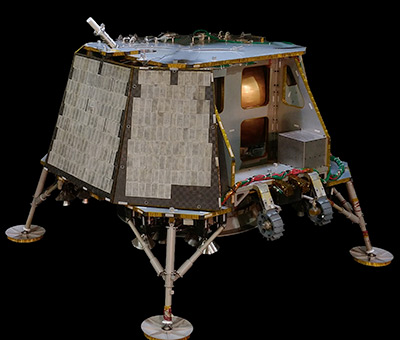NASA tasks OrbitBeyond with Commercial Lunar Lander MissionOrbitBeyond's commercial lunar spacecraft to deliver NASA payloads to the Moon in 2020
NASA announced today that OrbitBeyond has been selected as one of the first robotic missions to carry NASA science payloads to the surface of the Moon under the Commercial Lunar Payload Services Program, ushering in a new era of deep space commercial services in support of NASA's plans to send astronauts to the Moon by 2024.
"Our selection of these U.S. commercial landing service providers represent America's return to the Moon's surface for the first time in decades, and it's a huge step forward for our Artemis lunar exploration plans," said NASA Administrator Jim Bridenstine. "Next year, our initial science and technology research will be on the lunar surface, which will help support sending the first woman and the next man to the Moon in five years. Investing in these commercial landing services also is another strong step to build a commercial space economy beyond low-Earth orbit."
"We're thrilled to be selected for renewed American presence on the lunar surface. With most of our system risks retired through prior engineering development and testing, we're working towards a successful mission to the Moon in 2020," said Siba Padhi, President, OrbitBeyond. "Our team comprises of industry experts, proficient partners and skilled entrepreneurs, offering an agile, reliable and cost-effective lunar delivery service."
OrbitBeyond believes that low-cost access to cislunar space will spur investment in in-space infrastructure and increase global interest in creating new markets for discovering and utilizing resources in space. Beginning with the initial 2020 flight, OrbitBeyond intends to increase payload capacity and significantly reduce costs in order to expand both domestic and global demand.
"There is a tremendous amount of science about and from the Moon that we can accomplish through increased access to the cislunar ecosystem," noted Jon Morse, OrbitBeyond's Chief Science Officer. "This is a huge opportunity to expand humanity's presence beyond low-Earth orbit, and science can lead the way towards identifying the in-situ resources needed to sustain a long-term presence and gaining a better understanding of our place in the cosmos."
"OrbitBeyond will fly us back to the Moon next year because they embrace the new model for doing business in the space industry" said Bradley Cheetham, CEO of Advanced Space. "We are excited to be on this team because when you leverage experienced partners who have existing capabilities, you create a robust, cost-efficient, and repeatable way to the Moon." Ceres Robotics, TeamIndus and Honeybee Robotics are key partners in the journey.












